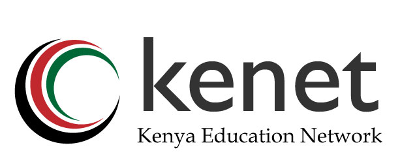You are here
Remote Teaching Transforms Learning at Catholic University
June marked the final phase of the Remote Teaching Pilot Project at Catholic University of Eastern Africa (CUEA). The project, which was piloted at CUEA and Daystar University enables two or more classes to be held simultaneously using web conferencing technology. The Remote Teaching Project at CUEA kicked off in May 2017 with a sense of novelty and concluded with excitement. Since its launch, the Project has been able to facilitate four units between its main Campus in Langata, Nairobi and its Gaba Campus in Eldoret since its launch. The project has created a world of new possibilities and avenues for pedagogy for both students and lecturers at CUEA.
When the Remote Teaching was launched, project leads were assigned in each institution to coordinate the Remote Teaching classes in their Campuses to ensure the multiple classed being taught by a lecturer were well facilitated. Prof. Joseph Kavulya, the University’s Librarian who also served as the Remote Teaching Project Lead at CUEA, noted that, “the experience has been positive. It has been quite exciting but also quite challenging. Exciting because this is a new technology and a new way of doing things. It has been positive because we have learnt a lot but challenging in the sense that coordinating many groups of people which includes timetabling, getting the message accepted, the new formats accepted is quite a challenge.”

Prof. Japeth Kaluvya explaining the Remote Teaching Project during and interview
Prof. Kavulya explains the Remote disrupted the conventional way of pedagogy and set the base for transition into a new mode of teaching. “The reception has been varied. Initially the students didn’t know what it was about, but the ones who participated were excited about it and were positive about it. The lecturers were a bit slow in accepting the idea because some were specialists in education pedagogy and were not accustomed to it, so they had so many questions about how this mode addresses the principles of pedagogy. It required new reorganization of their time and their delivery styles, therefore their reception was slow but the ones who got the idea were positive about this.”
Remote teaching at the University was mostly used to teach commerce and education courses. Prof. Kavulya explains that this was because they are the main courses in the Campus and had shared course units among their Campuses. Sister Dr. Elizabeth Piliyesi, a post-graduate lecturer in the Department of Education and Planning was among the pioneers to use Remote teaching Program to teach a class of 22 Students.

Dr. Elizabeth Piliyesi recounting her experience using the Remote Teaching Program
“I have really managed to use the technology effectively which I have used to teach. It’s easier to interact with the students. The other benefit is that I personally enjoyed using the machine. The feedback that I got from the students, was that they really enjoyed the program because they were able to interact with their colleagues and learn a lot from the other group. It’s a miracle!”, she exclaimed.
One of Dr. Piliyesi students, Safari Kabwika, a Postgraduate student who took two educational courses noted that, “the experience was very good especially with the interaction of other students and the course became richer as input from both sides was very helpful. I wish we could organize something like that with students of CUEA and our university in D.R. Congo. A partnership could be interesting.”
Remote Teaching has offered the CUEA community a new trajectory in teaching which has since been embraced. Having concluded the Remote Teaching pilot phase, the Institutions will determine whether to fully implement the new mode in their curriculum.
“One of the biggest benefits of Remote Teaching is the transition. The ability to transit from the old way of doing things to this use of technology is a good way of incorporating ICT in teaching. I think that’s best because we have to adapt to the current teaching technologies,” said Prof. Kavulya.
